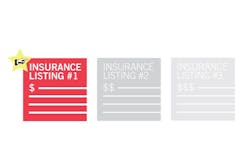Whether you believe globe-trotting is a gratifying part of your job or a chore (I see it as both), there is one thing that it does highlight—people are very similar wherever you go, with the same needs and desires we all have in our lives. This similarity enables those huge corporations such as Coca-Cola, McDonalds, GM and Ford to be able to sell almost the same product whether in the U.S., Uruguay or Uzbekistan.
What I do find interesting as an international traveler is how different markets have had entire industries changed by some products, whereas they aren’t even heard of, or recognized, in other continents. I guess this is where opportunity comes from, where businesses can make real money when trading models are proven and can then be replicated.
Over the last five years, automotive insurance and collision repair have been transformed by one such business idea, the implementation and uptake of which has created catastrophic challenges and changes within motor insurance and the body shop market sectors. The automotive insurance buying public within Europe, and in particular Britain, was hit hard by the global financial crisis and has changed its behavior from loyal customers to price-driven, chop-and-change shoppers in this mandatory insurance category.
So what’s the driver for this incredible change? It’s called the price comparison site (PCS)—websites similar to those that compare flights and medical insurance, but now in the automotive insurance industry. A simple one-off entry of your vehicle, personal and location details into the website, and within a couple of minutes you are presented with a list in price-ascending order, the cheapest first, of most insurance carriers’ quotes for you to choose from. Typically consumers will scan down this list until they find the best price, but from a brand they are comfortable insuring with.
From a consumer’s perspective this is utopia—you get the cheapest price from a trusted brand without having to phone numerous companies, or fear being upsold on the telephone. It changes people’s behavior from dog-like (loyal) to cat-like (predatory) and changes the whole dynamic of our market. There is, like most things, a downside, and it seriously affects you and me within the collision and insurance industries.
People cease buying insurance time and time again from the same company, meaning pricing has to become more competitive and insurers have to compete in a more volatile and transparent marketplace. Insurers have to strip out the “value” of their policy to compete on price. In the U.K., we saw a roughly 40-percent drop in premiums as these sites started to become popular to the point where about 65 percent of insurance is now purchased this way. To add another twist to the tale, comparison sites became savvy and allowed consumers to change the voluntary value of their deductible to be able to be increased, up to a value of about $1,500. The net result of course is that the premium paid is significantly reduced. Most purchasers of motor insurance do not consider that they will have an accident, therefore they bump their deductible higher.
This creates a number of significant challenges and changes to the collision repairer. You are quite unlikely to see the same customer again in a DRP scenario because the following year they will have insured with somebody else, so building a repair business and relationships is more difficult.
Fewer people will claim when they have a collision because they suddenly realize that they have a $1,500 deductible, and it’s unaffordable. This means fewer repairs being carried out. The smaller, more profitable work is being taken away, and the statistics we witness show annual claims percentages down in about five years from 14 percent to just 8 percent—almost half of the work being repaired under the DRP model.
Because insurers are now under extreme pressure to be competitive in a transparent marketplace, they have to reduce costs within their own businesses. This typically means significant internal staff culling and, inevitably, a squeeze on the supply chain—that’s you. If you think the insurer is demanding today, consider what it might be like if the PCS gains traction in the U.S. Insurers will start to demand much more.
In the U.K. market, this has manifested itself with free courtesy vehicles, shops owning tow-in trucks, reduction in paint and materials charge-out, and insurers demanding better management information around the whole vehicle repair, often resulting in a 1:1 ratio of production to front office staff. In simple terms, the costs to the collision shop are escalated dramatically, charge-out is capped and margins are squeezed.
Will this happen in North America? I can’t say for sure, but a couple of these sites have emerged in the U.S. in the last year. In the U.K., these sites are very profitable for their owners, with massive growth and value. Insurers almost have no choice but to play ball with them, as it encourages new insurers to enter the market because of the incredible reach they have through television advertising. In many European countries, PCS advertising is twice that of traditional insurers.
My little exposure to U.S. television indicates that the traditional insurance carrier is still king. So, it is likely only a short time before the PCS begins gaining momentum.
Jon Parker is managing director of the Byteback Group, a U.K.-based information technology and services company aimed at advancing the collision repair industry. Parker can be reached at [email protected].
